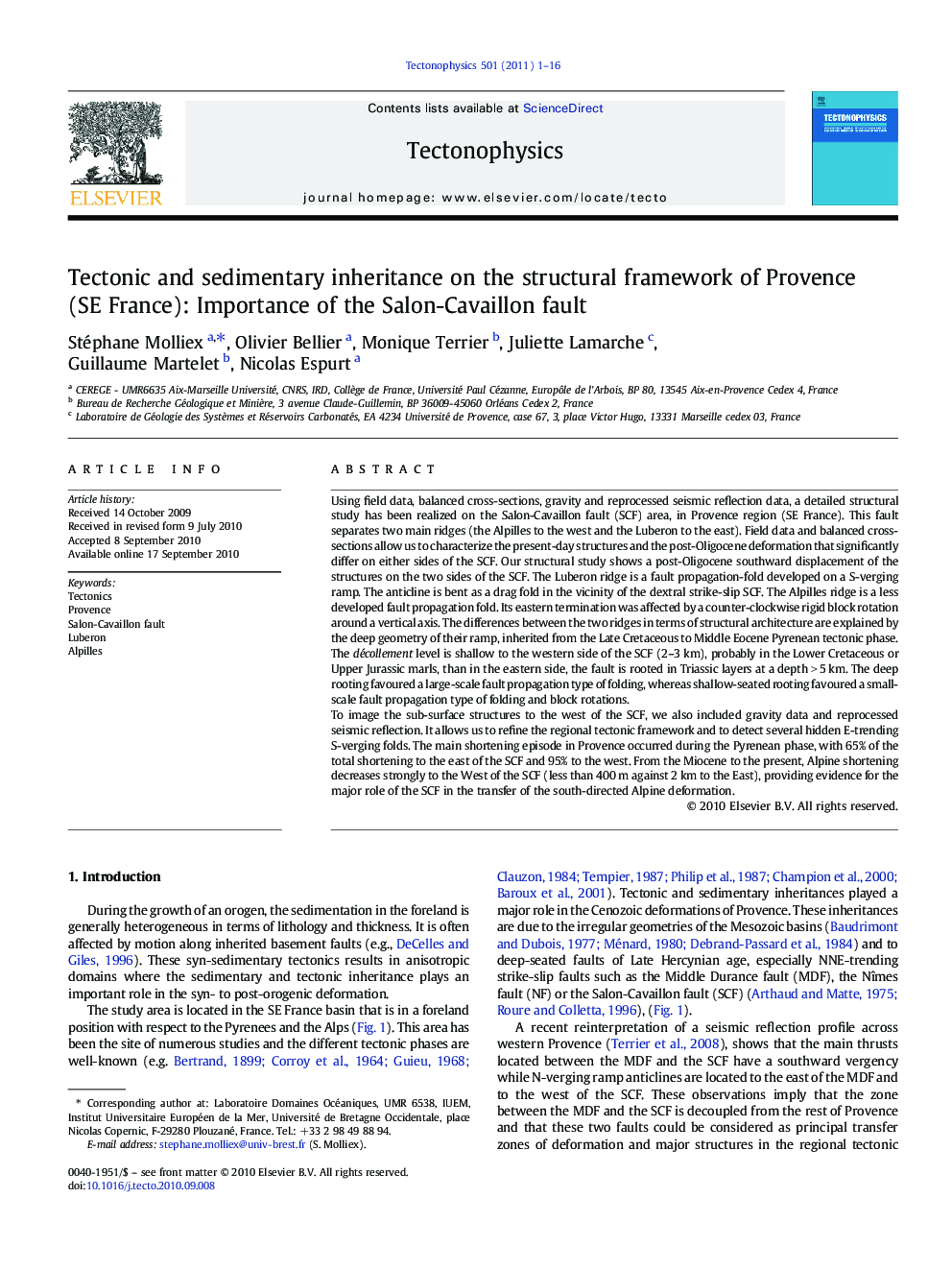| Article ID | Journal | Published Year | Pages | File Type |
|---|---|---|---|---|
| 4693204 | Tectonophysics | 2011 | 16 Pages |
Using field data, balanced cross-sections, gravity and reprocessed seismic reflection data, a detailed structural study has been realized on the Salon-Cavaillon fault (SCF) area, in Provence region (SE France). This fault separates two main ridges (the Alpilles to the west and the Luberon to the east). Field data and balanced cross-sections allow us to characterize the present-day structures and the post-Oligocene deformation that significantly differ on either sides of the SCF. Our structural study shows a post-Oligocene southward displacement of the structures on the two sides of the SCF. The Luberon ridge is a fault propagation-fold developed on a S-verging ramp. The anticline is bent as a drag fold in the vicinity of the dextral strike-slip SCF. The Alpilles ridge is a less developed fault propagation fold. Its eastern termination was affected by a counter-clockwise rigid block rotation around a vertical axis. The differences between the two ridges in terms of structural architecture are explained by the deep geometry of their ramp, inherited from the Late Cretaceous to Middle Eocene Pyrenean tectonic phase. The décollement level is shallow to the western side of the SCF (2–3 km), probably in the Lower Cretaceous or Upper Jurassic marls, than in the eastern side, the fault is rooted in Triassic layers at a depth > 5 km. The deep rooting favoured a large-scale fault propagation type of folding, whereas shallow-seated rooting favoured a small-scale fault propagation type of folding and block rotations.To image the sub-surface structures to the west of the SCF, we also included gravity data and reprocessed seismic reflection. It allows us to refine the regional tectonic framework and to detect several hidden E-trending S-verging folds. The main shortening episode in Provence occurred during the Pyrenean phase, with 65% of the total shortening to the east of the SCF and 95% to the west. From the Miocene to the present, Alpine shortening decreases strongly to the West of the SCF (less than 400 m against 2 km to the East), providing evidence for the major role of the SCF in the transfer of the south-directed Alpine deformation.
Research Highlights► Structural style in Provence is controlled by tectonic and sedimentary inheritance. ► Main episode of shortening in Provence occurred during the Pyrenean tectonic phase. ► The Alpine deformation is mainly expressed between the SCF and the MDF.
